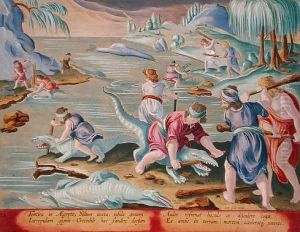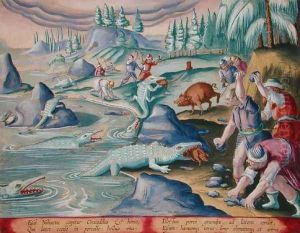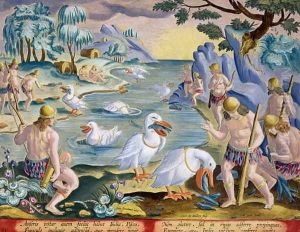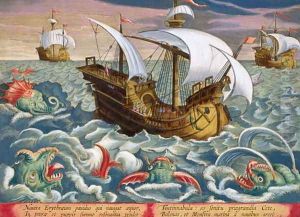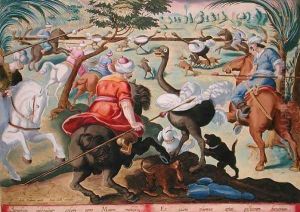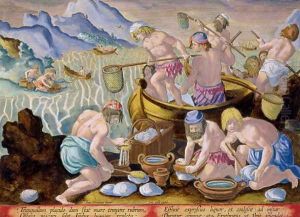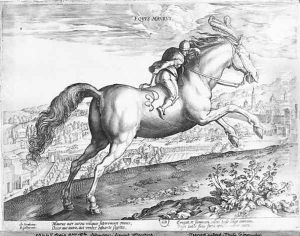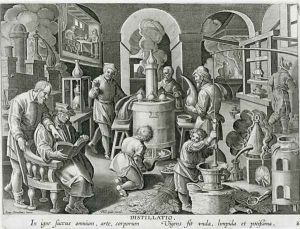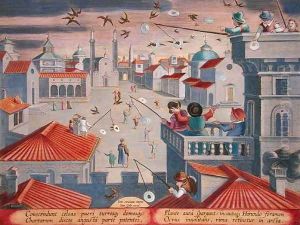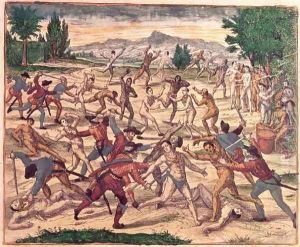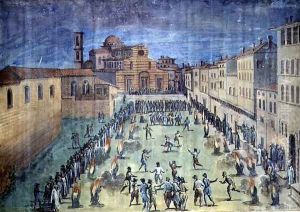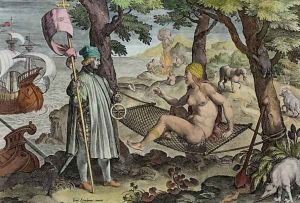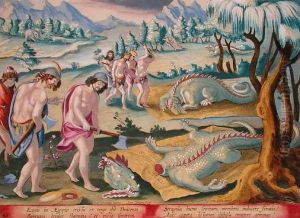





Decapitating Crocodiles, plate 46 from Venationes Ferarum, Avium, Piscium Of Hunting Wild Beasts, Birds, Fish engraved by Jan Collaert 1566-1628 published by Phillipus Gallaeus of Amsterdam
-
About Reproduction
Discover the allure of art with our faithful reproduction of "Decapitating Crocodiles, plate 46 from Venationes Ferarum, Avium, Piscium Of Hunting Wild Beasts, Birds, Fish engraved by Jan Collaert 1566-1628 published by Phillipus Gallaeus of Amsterdam", originally brought to life by the talented Giovanni Stradano. Unlike posters or prints, our hand-painted oil painting breathes an unique sense of depth and texture into your space. Every detail, every stroke, and every texture is meticulously recreated, paying the perfect homage to Giovanni Stradano and his artistic vision.
Owning this piece is more than just decoration - it's a statement of your refined taste in art. Let the vibrant colors and intricate details of this replica serve as a daily reminder of the beauty in our world. Elevate your decor and appreciate the richness of art with our replica of this masterpiece.
-
Painting Description
"Decapitating Crocodiles" is plate number 46 from the series "Venationes Ferarum, Avium, Piscium" (Of Hunting Wild Beasts, Birds, Fish), a collection of engravings that depict various hunting scenes involving animals. This particular plate was engraved by Jan Collaert (1566–1628), a Flemish artist known for his work in printmaking, and was published by Phillipus Gallaeus (Philips Galle) in Amsterdam. The series itself was designed by Giovanni Stradano (also known as Jan van der Straet), an Italian artist of the 16th century who was active in Florence and known for his eclectic subject matter, ranging from historical scenes to exotic animals.
"Decapitating Crocodiles" illustrates a dramatic and violent encounter between humans and crocodiles, a theme that reflects the fascination with and fear of exotic creatures during the Renaissance period. The scene is likely a product of the artist's imagination rather than a depiction of a historical or cultural practice, as such direct confrontations with crocodiles would have been uncommon.
The "Venationes" series was created during a time when European interest in the natural world and its curiosities was growing, partly due to the expansion of European empires and the resulting encounters with unfamiliar wildlife. The engravings served both as works of art and as a means to disseminate knowledge about the animal kingdom, albeit through the lens of the era's understanding and mythologizing of nature.
As an artwork, "Decapitating Crocodiles" is representative of the Mannerist style, characterized by its complex composition, exaggerated proportions, and dramatic intensity. The series to which it belongs is considered an important contribution to the genre of animalier, or animal art, and reflects the interplay between art, exploration, and science during the Renaissance.
The "Venationes Ferarum, Avium, Piscium" series is held in high regard for its artistic merit and historical significance, providing insight into the Renaissance mindset and its approach to the natural world. "Decapitating Crocodiles," as part of this series, is a notable example of the era's printmaking and continues to be studied for its depiction of human-animal interaction and its place in the history of art.
-
Lead Time & Shipping
When you order this oil painting replica, it typically takes 2-3 weeks to paint. If the artwork is more complex, it might need a little more time to ensure the best quality. Once it's ready, we'll send you a photo for your approval. After you give the green light, we'll ship it to you for free.
-
Return & Refund
We believe in the quality of our hand-painted oil painting reproductions, and your satisfaction is our priority. If for any reason, you are not completely satisfied with your purchase, we offer a 45-day return policy. You can return your artwork within 45 days of receipt and receive a full refund. Please note that the artwork must be returned in the original packaging and in the same condition as it was received.





